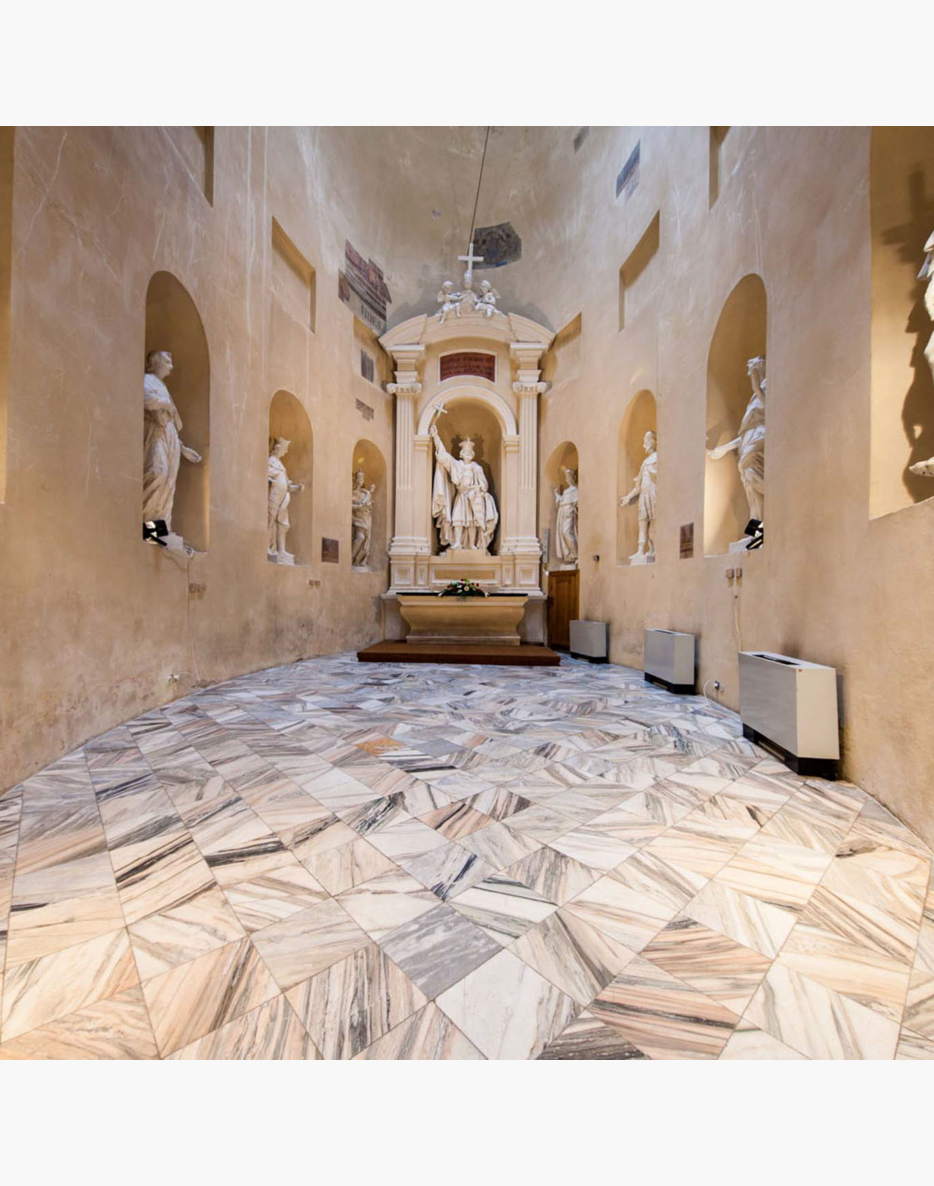St Vladislaus was the king of Hungary and Croatia who lived in the 11th century and became the patron saint of Hungary. Jogaila, the ruler of Lithuania and Poland, chose Vladislaus as his baptismal name. That is why when Jogaila built Vilnius Cathedral in 1387 it was decided to name it after both St Stanislaus and St Vladislaus.
Wawrzyniec Gucewicz designed the elliptical Chapel of St Ladislaus (formerly the Chapel of Bishop Abraham Woyna) in the last major remodelling of the cathedral. It used to have mural paintings, of which only fragments can be seen today. The Latin inscriptions that have survived beside the chapel’s altar reveal the theological meaning of the paintings: Zelus (zeal) and Fides (faith). The altar was built in the mid-19th century, and the niche holds a massive plaster sculpture of St Ladislaus holding a cross (1861–1863, by the sculptor Henryk Dmochowski). Until 1905, this sculpture was covered up, by order of the Imperial Russian authorities, as a manifestation of active Catholic missionary work. The chapel’s Latin dedication can be seen in the fresco above the statue of King Ladislaus.
At Christmas, a nativity scene is displayed in the Chapel of St Ladislaus, and a procession with the Blessed Sacrament is conducted to the chapel on Maundy Thursday.
